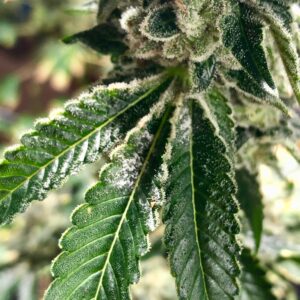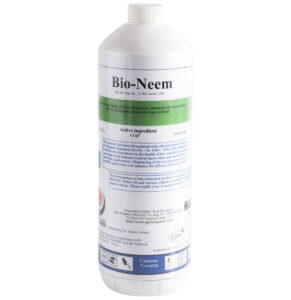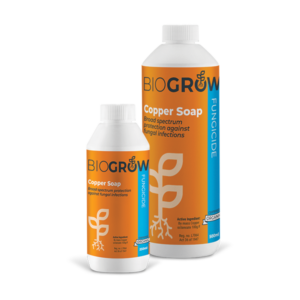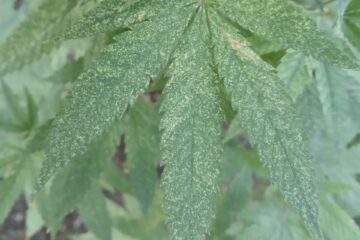Powdery Mildew, or PM for short, is a fungal disease. It causes the growth of mycelium (fungal strands / threads / mould) on the surface of leaves, stems, fruits and flowers. PM can be a grim foe but an old saying goes “An ounce of prevention is worth a pound of cure.” A lesson you will almost certainly learn when growing cannabis. So here’s our guide on some products and methods for powdery mildew prevention.

Mildew Infection
Why is powdery mildew bad?
Mildews and moulds feed on living plant tissue piercing cells to sap food and fluids. This affects growth and in the end, yield. If left as is, plants can easily die from the fungal infection.
Using flower spoiled with powdery mildew can be harmful to your health. Breathing in spores can cause serious irritations, coughing and infections. People with breathing problems could have more serious reactions and infections.
How do mildew infections occur?
Mildew and mould spores are all around us, the air is full of them. Powdery mildew will spread thousands of tiny spores when ever disturbed. If spores land on an area where factors are right, infection can occur.
These fungi like warm, humid and moist conditions where they thrive. Ideal temps are around 15-27°C/60-80°F. Accept it or not, it often does well in dry climates too. However, powdery mildew does require fairly high relative humidity to spread. Like rain or when water droplets form between over-lapped leaves.
For indoor growers poor air exchange, circulation and temp changes can aid powdery mildew in taking hold.
How is powdery mildew prevented?
The best defense against PM is a healthy plant. This makes an initial infection tough. Still, when things are right, PM spores can land on a surface taking hold. Once infection occurs it can be very difficult to get rid of. By carrying out prevention methods on the regular, you can fend off infection in the first place. This will form part of your Integrated Pest Management (IPM) program. Should you not have one, it’s a good time to start.
It’s also key to note whether a fungicide is safe to use in the flowering stage. Certain products as well as systemic fungicides for example are not safe for flowering cannabis and human use.
Methods for Powdery Mildew Prevention
Oils
With regular use, neem oil has proven to be very good in preventing powdery mildew. Neem does have a strong smell and can leave a residue and flavour on your finished product affecting taste. Use neem in the veg stage of your grow which also aids as an insect repellant. Oils act as a wetting agent, preventing liquids from beading and rolling off the leaf surface. This helps with proper coverage of your foliar spray.
Bicarbonate of Soda & Non Detergent Soap
Bicarb of soda and dish wash liquid is a usual recipe. Used in gardens across the world and often quite useful. Most recipe’s say to mix a half tea-spoon of bicarb in 1 liter of water. Some will add a few drops of non detergent soap. Generally, plants don’t like soap so keep detergents, de-greasers and bleaches well away. The alkali nature of the bicarb mix will also help raise the pH of the leaf surface. This is something mildew doesn’t like. To give you a heads up though, we got a salty taste when we used flower dosed with bicarb. Use it in early flower only.
Potassium Bicarbonate Organic Fungicide
A PB solution will kill PM colonies and spores on contact. Most likely better than what baking soda would. Dissolve one teaspoon in 1 liter of water as a widely accepted organic fungicide. Do not apply after week 4 of flowering cannabis to avoid any residue.
Bio Fungicides
There are bio controls for powdery mildew prevention. One of the most fruitful is Ampelomyces quisqualis. A fungi that is a hyper-parasite to PM. After applying, for 7-10 days, the myco-parasite moves within the body of the mildew colony. While still alive, spreading of the mildew stops at this time. There after, the AQ-sf starts to fruit inside the PM, killing it in the next 2-4 days. If needed, apply AQ-sf on crops up to 3 days prior to harvest as it poses no threat to humans. It’s most effective when used weekly in an IPM program. Check compatibility of IPM products before applying AQ-sf. This is our go to product for powdery mildew control. You can extend the short shelf life of bio agents like this by keeping them in the fridge.
Jadam & KNF Fungicides
The Korean Natural Farming approach, or KNF for short (aka Jadam), is a growing trend among cannabis growers. Methods are given to create your own organic prevention inputs and pest control solutions for cheap. Or simply if you prefer doing it your self. Wetting agents, sulfur and ferments are used to make mixes aiding in your fight of powdery mildew prevention. The downside is that they can take time to make. Neudosan is an over the counter soft soap and wetting agent.
BioGrow Neudosan 500ml(Opens in a new browser tab)
Copper & Sulphur Fungicides:
Proven to be a very useful fungicide. Copper will help in the prevention and control of most fungal problems. Biogrow’s Copper Soap is safe to use in the veg stages of cannabis growth. Do not apply to flowering plants. After applying, the fungicide will break down into fatty acids and copper over a day or two. Both elements ready for use by plants and microbes.
Like copper, sulphur is also a useful fungicide and powdery mildew preventative. A soluble kind is applied for the last time in the early stages of flower. Sulphur can also aid in the prevention and control of certain pests like thrips. However it will also kill helpful insects on contact. Sulphur can not be used with oils like neem and canola.
Many gardeners choose not to use broad spectrum fungicides for cure or prevention. Any excess run off onto soil can also kill fungal life in the growing medium.
Hydrogen Peroxide
A clean, versatile product that is a strong oxidizing agent. Peroxide for short, is basically water with an extra oxygen molecule. Peroxide solutions can be useful in killing PM colonies and spores, aiding prevention. Mix a 3% solution with 4 parts water and spray on plants in the coolest part of the day. Hydrogen peroxide has the ability to damage plants and flowers so beware. Handle it with extreme care and read more on hydrogen peroxide here.
Hydrogen Peroxide 50%(Opens in a new browser tab)
Milk
It sounds wild, but Brazilian agri research worker Wagner Bettiol got on top of powdery mildew on zucchini with milk. Publishing his research in 1999, he found that high doses of milk were often more effective than other products. Bettiol applied milk to plants at 5, 10, 20, 30, 40, and 50% doses. He applied either once or twice a week. Whats key to note is that the milk mix needs 5 hours of sun light once applied. Proteins in the milk react with the sun’s UV rays giving it it’s anti fungal use. A word of warning, milk can smell very bad when it breaks down. Not for indoor growers or when close to harvest. even though effective, it’s not advice we would give.
Silica
Silica can be vital to plants in creating healthy cell walls and aid prevention. The more robust the plant, the harder it is for mildew to pierce the cell wall. Silica is good at making plants stronger when applied as a foliar during the veg stage. The last spray during the flowering stage would be week 2 or 3. Do not mix Silica with other calcium nutrients or products. Apply it on its own with a suitable wetting agent. PlantGuard, mono silicic acid, is our go to silica product for powdery mildew prevention.
Integrated Pest Management (IPM) Program for Powdery Mildew Prevention
A good regime can curb problems during your grow if followed properly. To improve success rates, it’s possible and often advisable to use many products together. Skipping a spray is all it takes to let things get out of control and ruin a harvest. Whats also key is to research and check if the products you plan to use can work together.
Here are a few recipes we’ve found to be effective for powdery mildew prevention:
Vegetation Stage – Per Liter Water
10ml Bioneem
5ml Copper Soap
Flowering Stage
Option 1 – Per Liter Water (Up to the 2nd last week of flower)
AQ-SF – 5ml
Bio-Tricho – 5ml (Trichoderma slows the growth of many plant pathogens)
Canola Oil – 5ml (Wetting agent, use up to week 6)
Option 2 – Per Liter Water
Hydrogen Peroxide 50% – 5ml
Canola Oil – 5-10ml
Applying Foliar IPM Solutions for Powdery Mildew Prevention
Best practice is to apply the foliar sprays at sunset or just before lights off. If indoors, switch off all fans leaving your extraction running. Apply to the stems starting from the bottom up following the main stem and then each side branch too. Turn the plant 180 degrees and repeat. Next, spray the undersides of the leaves from the bottom up while rotating the plant a little at a time until you’ve gone right round from top to bottom. Move onto the upper surface of the leaves from the top down. Rotate the plant and finally spray from the side too, turning as you go. By this time the plant should be wet with solution. Any spots missed is a place mildew can grow so make sure you do a good job.
Pump Sprayer(Opens in a new browser tab)
Conclusion In Preventing Powdery Mildew
We often get calls with clients who have issues with powdery mildew in late stages of flower looking for a cure. When we ask what they were doing as prevention it’s usually just quiet on the other side. Our advice is to get an IPM program together. Chat to other growers about what they use if you need some help. The worst thing you could do is nothing and expect for all to go well. Rather do some prevention and have peace of mind that your cannabis flower is clean and safe to smoke. It takes a bit of effort for successful powdery mildew prevention but it’s well worth it.
More Tips
Growing strains resistant to powdery mildew can also aid in prevention. There isn’t one single strain that is immune to the disease.
Cycle air in the grow room every 2 minutes. This is the least your plants need. Adding oscillating fans will aid circulation. Keeping temps and humidity stable without big swings will also aid prevention. Use gear like the Gree Dehumidifier 20/40L to aid in controlling humidity.
Keep your grow room clean and deep clean after every harvest. Clean with hydrogen peroxide or San-O-Agri Extra if you can. Wipe down all your gear inside the room like fans and wash out trays and pots. Rinse Dehue and AC piping and tanks.








0 Comments